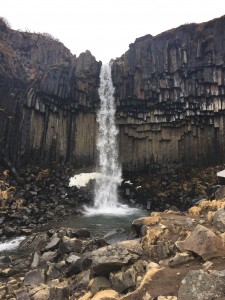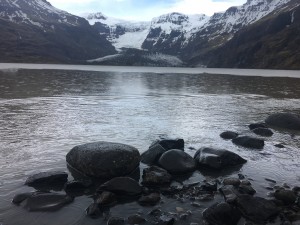Seeing pictures, reading books and watching movies about our environment evokes emotion and inspiration to take action. However, these forms of media have a threshold for motivation. I find that in order to be passionate about a place, one must visit and explore the land. It is hard to speak with vigor and precision about a stream, waterfall, or glacier without the first-hand experiencing these natural beauties.
Before our trip to south Iceland, I did not understand the true importance of experiencing these natural wonders. Walking on a glacier, tasting the cold water of a glacier lagoon, feeling the mist from a waterfall was thousands of times more powerful than the pictures and videos I had watched of these places.
Falling in love with a place such as the Svartifoss waterfall made me instinctively defensive and protective of the area. As other tourists came to visit I was conscious of my judgmental eye, waiting for them to cross the ropes so that I could, politely inform them of their impact on this beautiful land.
The tourists have loved this place to death, has been said to describe some of the places we visited. In the enjoyment and desire to see these places, we put these environments actually at risk. For protection, boardwalks and ropes are set up to discourage unnecessary trampling on sensitive flora and to help with erosion. On the second day a Skaftafell National Park, many of the trails were closed because of mud and flora protection. As disappointing as I was that we were unable to explore the trails, I was glad that the park was taking action to protect and conserve the land.
Here is the million-dollar question: How do people see these natural wonders so they can passionately protect them, without degrading the land in the process of visiting?
Svartifoss waterfall

Morsárlón Glacial Lake

Hailey Nase
